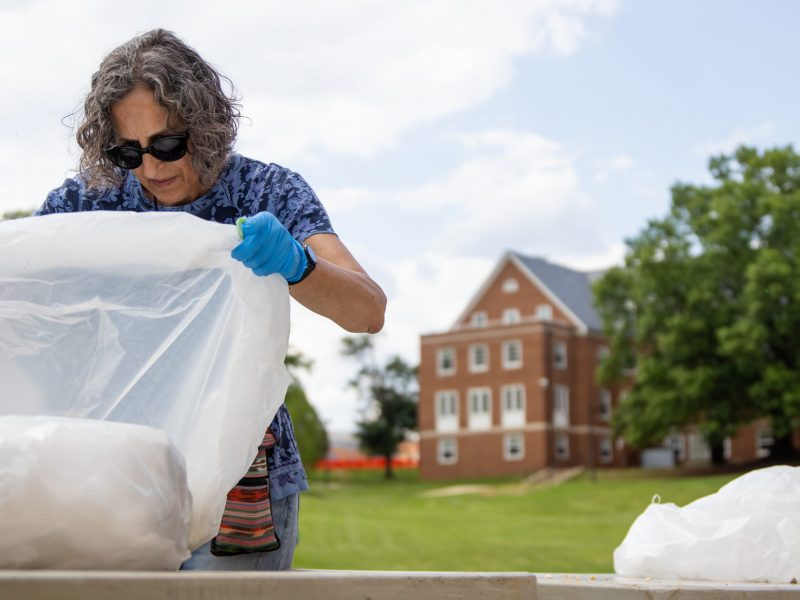
“Over the last decade or so, [The Flaming Lips’] live shows have been known to incorporate dancing groupies in animal costumes, [Wayne] Coyne’s famous space bubble and an obnoxious amount of confetti and lasers.” –Matthew Beinart
When Oklahoma City psych-rock vets The Flaming Lips took to David Letterman’s Late Show stage a few weeks ago, the group brought along a plastic baby doll sporting six-foot-long tentacles, microphones wrapped in aluminum foil and an army of space-egg-looking orbs used to encircle ever-enigmatic front man Wayne Coyne.
Releasing their 13th studio album, The Terror, today and celebrating their 30th anniversary, The Flaming Lips have shown no sign of slowing down their immense propensity for the weird and wonderful.
The past few years have seen them release an EP encased in a brain-shaped gummy, a 24-hour song enclosed in an actual human skull and a collaborative album, The Flaming Lips and Heady Fwends, featuring the likes of Ke$ha and Biz Markie. While most of their contemporaries are fading into relative obscurity or embracing the comforts of retirement, the Lips have continued to pursue the sort of musical ventures that escape the realm of gimmickry just enough to keep them relevant.
Starting out as a bunch of acidhead punks from Oklahoma City, their first few records consisted of indistinguishable noise that was a far cry from the orchestrated sound that would bring the group such acclaim later in its discography.
The first time The Flaming Lips conquered David Letterman’s stage, it was in 1995 and in support of their single, “She Don’t Use Jelly,” a song that perfectly encapsulates the group’s fine ability to allow humor and melody to coexist without coming off as gimmicky or cheap. Led by a doe-eyed, raspy-voiced Coyne and still featuring the warped guitar sensibilities of former member Ronald Jones, the Lips tore through the song, seemingly opening the door to this second phase of their career.
The final step in the Lips’ evolution, however, came when Jones left the group and drummer Steven Drozd finally embraced his role as a multi-instrumentalist and sonic genius, becoming the band’s behind-the-scenes mastermind. Using his songwriting prowess and skills in the studio, what followed was a string of releases, including the four-disc extravaganza Zaireeka, which cemented the band as everyone’s favorite psych-pop weirdos.
With age comes maturity, but certainly not for The Flaming Lips. Their most reserved and accessible work, The Soft Bulletin, came not at the end of their career, but in the middle. Over the last decade or so, their live shows have been known to incorporate dancing groupies in animal costumes, Coyne’s famous space bubble and an obnoxious amount of confetti and lasers. All the while, the group has continued to delve further into the experimental, releasing some of its most challenging material over the last few years, including 2009’s excellent Embryonic.
The Flaming Lips have refused to let their eccentricities evaporate. The Terror, which may be their most inaccessible effort to date, features grating synthesizers and dissonant tones, creating a bleak and challenging listening experience.
Thirty years in, and the Lips are still challenging us. As long as Coyne’s boundless energy continues to equal a steady stream of musical output, the world will remain in balance. With so many bland and forgettable acts clogging up today’s scene, we need The Flaming Lips to keep music weird.



